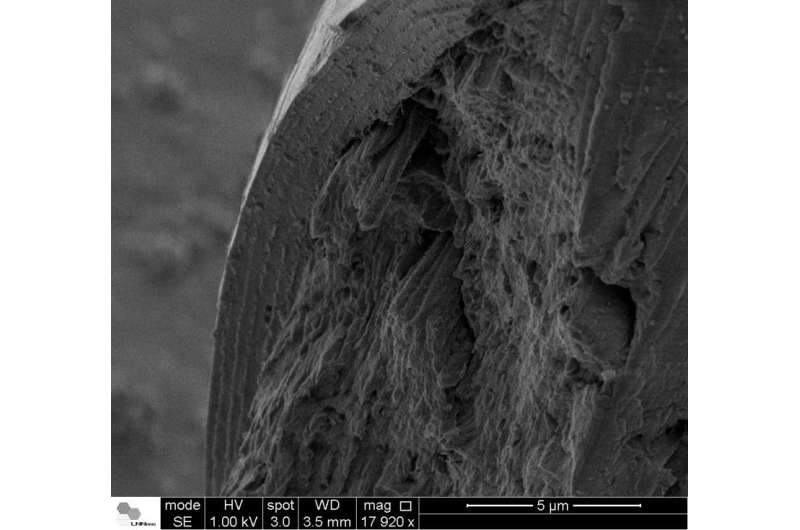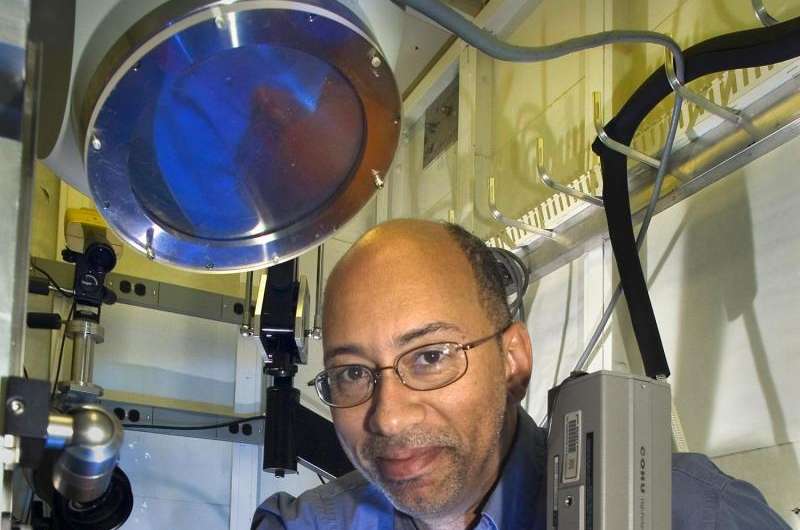Research leads to new discoveries about structure of human hair

A recent study on the detailed micro-structure of human hair reveals new details about the structure of a single strand of human hair, including new models of the molecular arrangements in two different regions of a hair. The study, published in the November 30, 2015 issue of the journal Scientific Reports, describes a technique that opens new opportunities for researchers to use synchrotron x-ray techniques for the study of a range of biological samples.
The research was done at the National Synchrotron Light Source (NSLS), a source of extremely bright x-rays that operated at the U.S. Department of Energy's Brookhaven National Laboratory from 1982-2014. It has since been replaced by NSLS-II, a new DOE Office of Science User Facility that produces x-ray beams 10,000 times brighter than its predecessor facility.
"The method used here—spatially resolved x-ray micro-diffraction—could be used to study all types of mammalian hair to look for differences and similarities across species and human ethnic groups, and could also have commercial applications," said NSLS-II physicist Kenneth Evans-Lutterodt, who helped conduct the research at NSLS with Vesna Stanic, a scientist at the Brazilian Synchrotron Light Laboratory.
The work was a follow-up from a previous study exploring the physical properties of commercial hair products. Before attempting to study the effects of these multi-component products on hair, Stanic and Evans-Lutterodt were curious to understand the molecular arrangements of untreated hair. So they began by collecting samples from young males who had never chemically treated their hair.

Stanic, a small angle x-ray scattering (SAXS) expert, and Evans-Lutterodt, a micro-beam diffraction expert, then developed an experimental configuration and technique at beamline X13B of NSLS that allowed them to get good quality data on hair.
Two techniques were key to this experiment. First, the scientists cut cross-sections of the hairs that were just 30-microns thick. Beaming x-rays along the axis of these thin "disk" samples allowed them to obtain separate signals from different regions of the hair.
Using an x-ray kinoform lens, they created an x-ray beam with extremely narrow dimensions—a mere 300 nanometers, or billionths of a meter—smaller than any previously reported experiments on hair. The kinoform lens was fabricated with the help of Aaron Stein of the Center for Functional Nanomaterials (CFN) at Brookhaven Lab.
"Very few x-ray diffraction experiments have used small x-ray beams on a single hair," Evans-Lutterodt said. "Also, the elements that make up hair—carbon, oxygen and hydrogen—produce weak scattering signals. These low signal levels made it a challenge to distinguish between the regions of hair, because they have very similar, but not identical structures."
With these techniques, the team resolved the molecular structure of each of the three known regions of human hair—the cuticle, the cortex and the medulla—and discovered a completely new region between the cortex and the cuticle. They refer to this new region as the intermediate region. In this region, the alpha-keratin molecules that make up hair acquire an ordered orientation, as opposed to being randomly positioned as they are in the cortex. Additionally, the scientists discovered that the cuticle has a diffraction signal—a type of x-ray derived "fingerprint"—that is characteristic of beta-keratin sheets, and quite different from the spaghetti-like alpha-keratin form found in the cortex.
The researchers expect to continue their work both in Brazil and in the U.S., possibly at NSLS-II. They would like to look at hair from different ethnicities, as well as hair from different species, and ultimately, compare those findings to hair that has been treated with commercial hair products.
"We hope to use NSLS-II because brighter beams will allow us to have better spatial resolution, provide a better signal to noise ratio, and help us study more samples from different species more quickly," Stanic said.
The techniques developed for this research will also advance the capabilities of x-ray imaging to help optimizing the usefulness of NSLS-II for studying other biological samples.
Journal information: Scientific Reports
Provided by Brookhaven National Laboratory





















